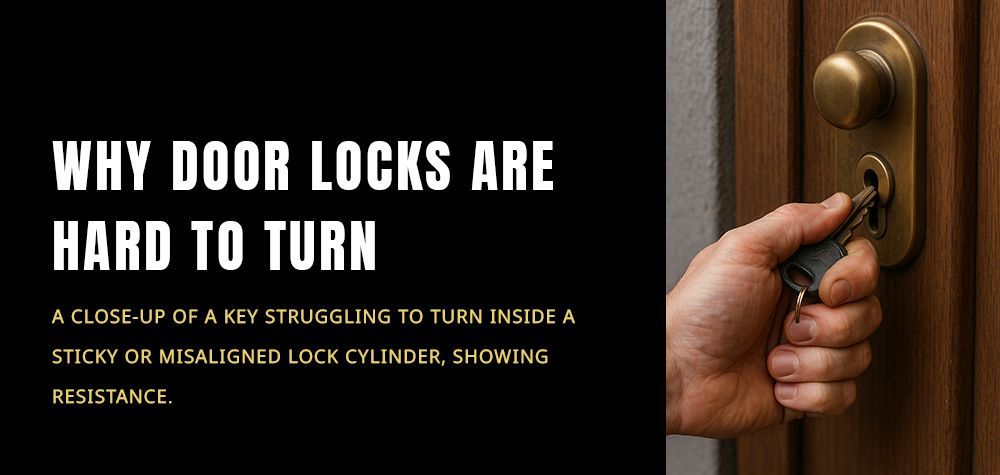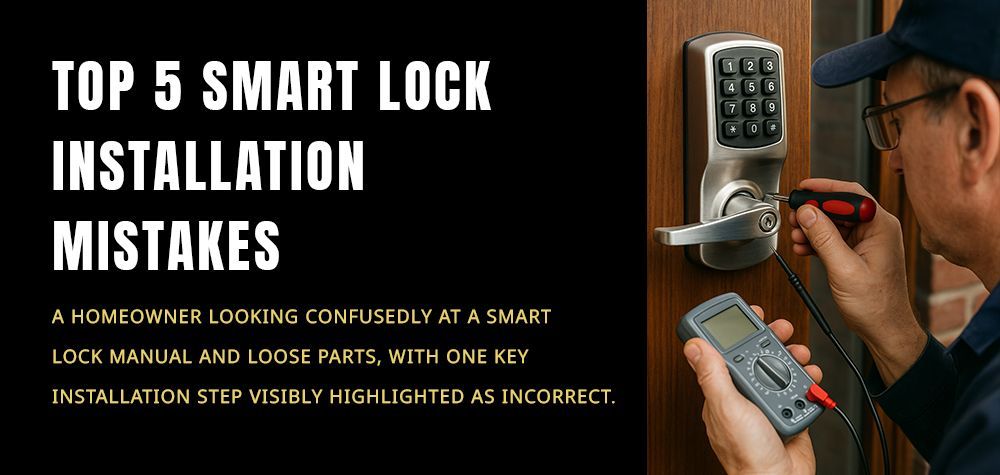When Should You Change Your Door Hinges for Better Security?
Your home or business door hinges are probably not something you think about often—until something goes wrong. Yet, these tiny, often overlooked components play a massive role in your property’s overall security. From squeaky doors to sagging frames, the signs are there. And sometimes, the price of ignoring them is much higher than a little creak—it could be a break-in or a serious safety hazard.
In this guide, we’ll walk you through everything you need to know about when and why to change your door hinges to boost security. We’ll cover causes, risks, and most importantly, what you can do to stay ahead of potential threats. Think of it as a friendly check-in on your home’s hidden defenders.
How to lubricate a lock without making a mess?
Why Door Hinges Matter More Than You Think
While most people focus on locks and deadbolts when thinking about door security, hinges are just as crucial. After all, they’re what hold your door in place. Weak, worn, or poorly installed hinges can compromise even the strongest locks. If someone can remove or force the hinges, they can simply bypass the lock altogether.
Especially in outward-opening doors—common in commercial settings and back entrances—hinges are often exposed and vulnerable to tampering. And that's where the real danger lies.
Signs It’s Time to Change Your Door Hinges
So, when should you seriously consider changing your door hinges? Here are some moments that should raise red flags:
1. Visible Rust or Corrosion
If you can see rust on your hinges, that’s a clear signal of weakness. Rust weakens the metal, making it easier to break, pry, or snap. It also causes squeaking, stiffness, and improper door alignment—all of which can signal a weakening hinge system.
2. Loose Screws or Wobbling Hinges
When your door jiggles or seems unsteady at the hinges, don’t just tighten the screws and move on. Repeated loosening is a sign the screw holes may have worn out or the hinge itself is too damaged to hold properly.
3. Misaligned Door or Dragging at the Bottom
A door that doesn’t close evenly or drags along the floor could be sagging due to failing hinges. Misalignment not only affects convenience but also creates gaps that burglars can exploit to pry open the door more easily.
4. Exterior Hinges on Entry Doors Without Security Pins
If your hinges are on the outside and don’t have non-removable pins or security studs, it’s time for an upgrade—yesterday. Exposed, removable-pin hinges are an open invitation to intruders who can simply pop them out and lift the door away.
Risks of Ignoring Worn or Insecure Hinges
The dangers go far beyond annoying creaks. Here’s what’s truly at stake if you ignore hinge problems:
Break-Ins
If your hinges are exposed or compromised, intruders can target them instead of your lock. It’s much easier to remove a door by the hinges than to pick a high-security deadbolt. Weak hinges give them the perfect opportunity.
Injury Hazards
A sagging or loose door can slam unexpectedly or even fall off entirely, posing a serious risk to children, pets, or unsuspecting guests. Hinges are about structural safety as much as security.
Property Damage
Loose doors can scratch floors, damage door frames, and even lead to water or air leakage. Over time, this adds up to repair costs that far outweigh the price of new hinges.
Can you install a lock without drilling?
Upgrading Hinges for Better Security: When and How
If any of the signs above sound familiar, it’s time to act. But don’t worry—changing your door hinges isn’t just about hardware; it’s about smart security decisions.
Let’s walk through the how.
Step-by-Step: How to Replace Your Door Hinges for Maximum Security
Changing your door hinges might sound like a job for a pro, but with the right approach, it’s a manageable DIY task—or at least something you can supervise knowledgeably.
Step 1: Choose the Right Hinges
Not all hinges are created equal. For security upgrades, look for:
Heavy-duty steel construction
Security studs or non-removable pins (for outward-swinging doors)
Ball-bearing hinges (smoother, longer-lasting)
UL-rated fireproof hinges (for added safety, especially in commercial buildings)
Hinges are your door’s backbone—so don’t skimp on quality here.
Step 2: Remove the Old Hinges One at a Time
Start by unscrewing the top hinge while the door is still supported by the remaining hinges. This keeps the door stable during the process. Then move on to the bottom and middle (if there is one).
Pro tip: Place a wedge or doorstop under the door to hold it in place.
Step 3: Install the New Hinges
Position the new hinge in place, ensuring it aligns perfectly with the existing screw holes. If the holes are worn out, fill them with wood filler or insert wooden dowels and re-drill for a tight grip.
Use long, heavy-duty screws—ideally 3-inch ones—that drive deep into the door frame. This makes it much harder to force the door open.
Step 4: Test for Alignment
After securing all hinges, swing the door open and shut several times. It should move smoothly without sticking or sagging. If anything feels off, adjust slightly before finishing up.
Preventive Measures: Keeping Your Hinges in Top Shape
Once you’ve got secure hinges installed, don’t just forget about them. Regular maintenance can extend their life and ensure your doors stay secure.
Lubricate hinges every few months with a silicone-based spray to prevent rust and squeaking. Inspect for loose screws or early signs of corrosion. Especially after storms or extreme temperature changes, give your hinges a quick check—they take more abuse than you think.
When to Call a Locksmith
Let’s be real—not every door or hinge job is DIY-friendly. If your door frame is cracked, your door is reinforced with steel, or you have concerns about correct hinge placement (especially with outward-swinging doors), it’s best to call in a professional locksmith.
A qualified locksmith doesn’t just swap hinges—they assess the entire door’s security integrity. They might recommend adding hinge bolts, reinforcing strike plates, or realigning doors for maximum protection. In other words, they help you see the bigger picture.
Final Thoughts: Don’t Let Weak Hinges Be Your Security Blind Spot
Changing your door hinges might not feel like a glamorous home upgrade, but it could be one of the most important ones. Security isn’t just about high-tech locks and alarm systems—it starts at the hinges.
Think of your door hinges as silent sentinels—always there, always bearing the weight. If they fail, everything else becomes vulnerable.
So don’t wait until you hear that telltale squeak or, worse, face a break-in. A simple change today can save you from major headaches tomorrow. And if you’re ever in doubt, your friendly neighborhood locksmith is just a call away.
Need help assessing your home or business security? Reach out to our expert locksmith team—we’d be happy to take a look, offer recommendations, or handle the upgrade for you. After all, peace of mind starts with a well-secured door.
Call Us Any Time!







